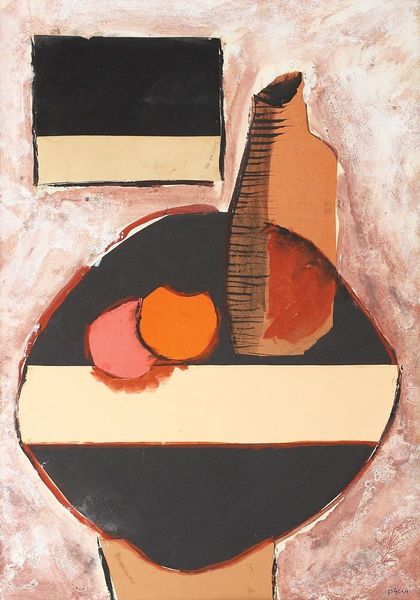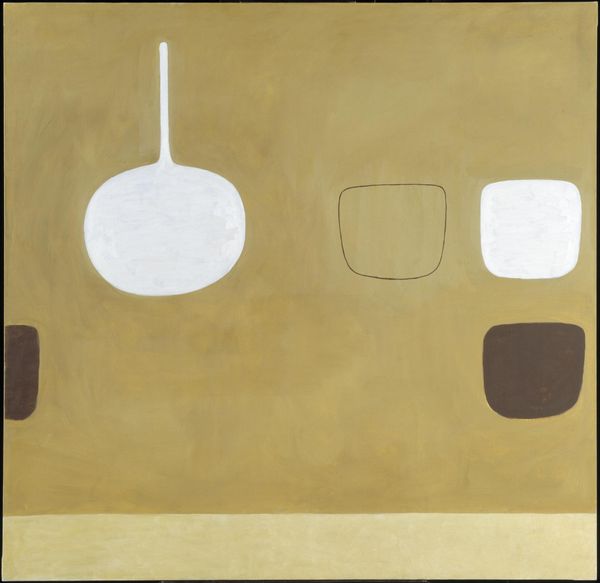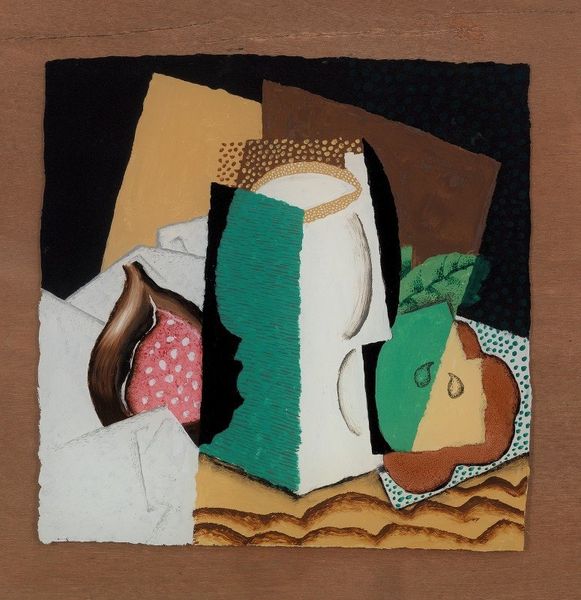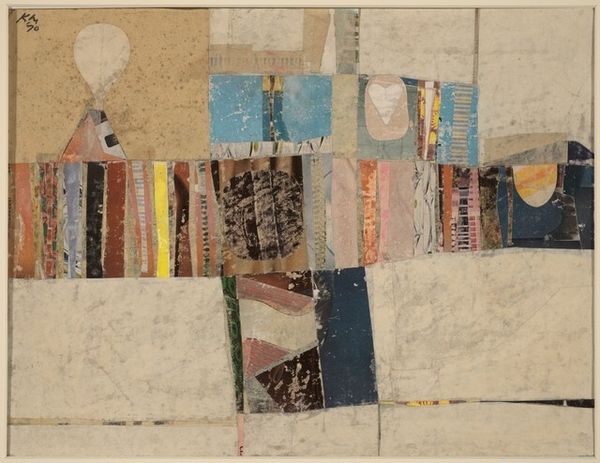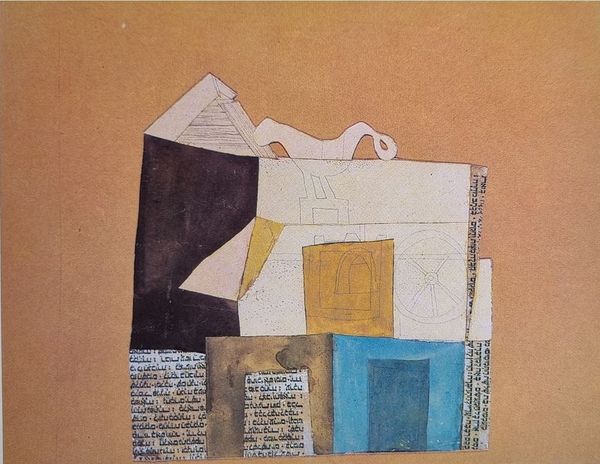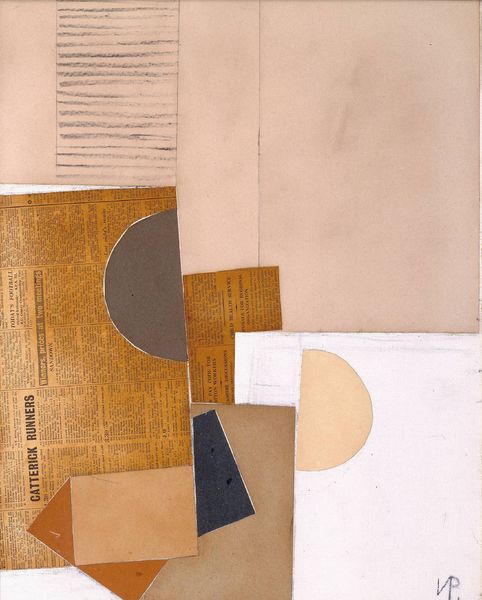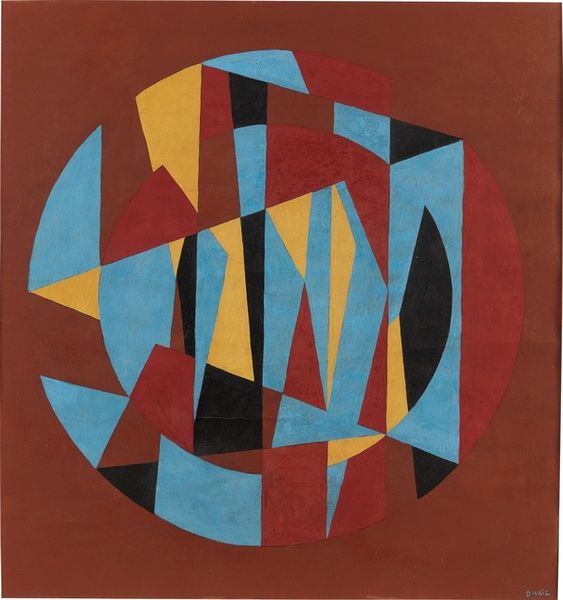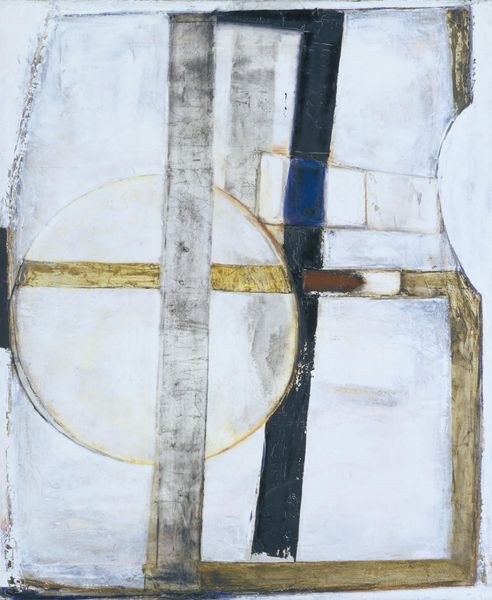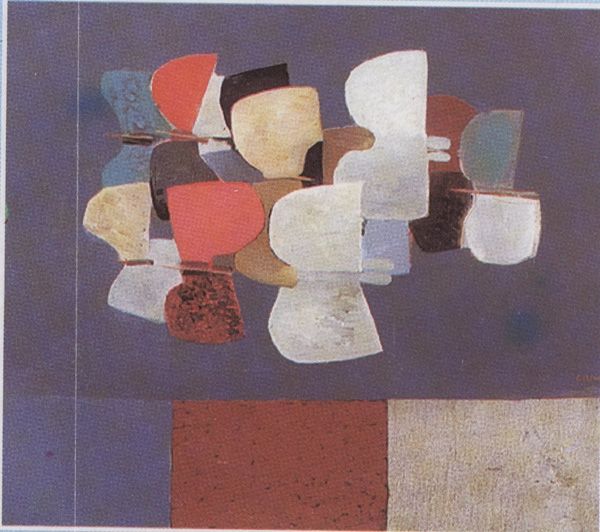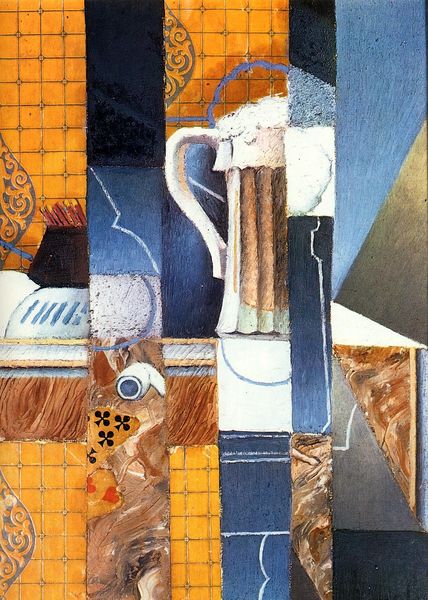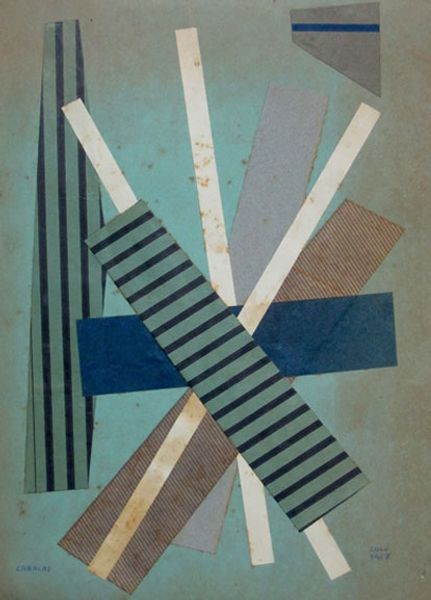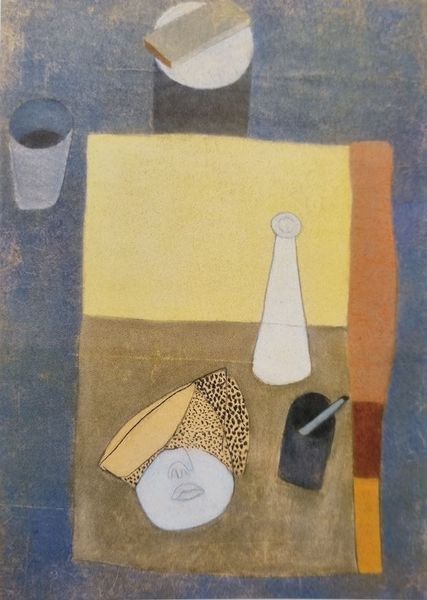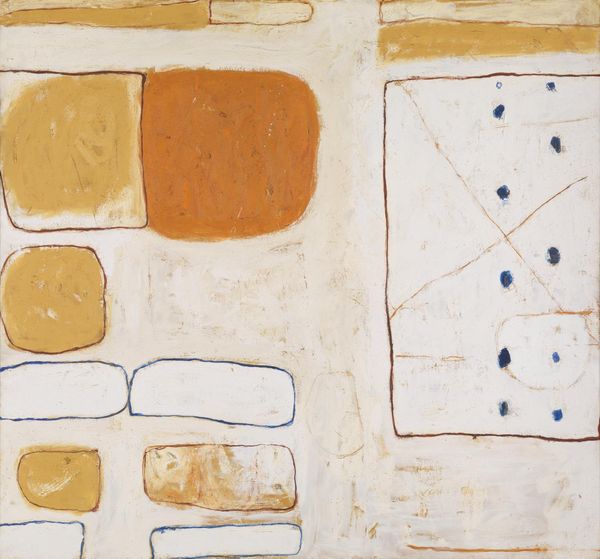
tempera, paper, pencil
#
tempera
#
paper
#
geometric
#
pencil
#
abstraction
Copyright: Public domain
Editor: So here we have Vajda Lajos’s “Still Life on Table,” created in 1934. It's tempera and pencil on paper, a square composition contained in a circle. There’s a fascinating sparseness to it, almost an austerity, despite the intimate subject matter. What strikes you most when you look at this work? Curator: It's a bit like a poem, isn’t it? Each element - the bottle, the box, the strange, organic form - whispers a suggestion without shouting. It reminds me of those still life paintings where objects symbolize something beyond themselves, something almost occult. Notice how Lajos has flattened the perspective, tilting the table up towards us. What do you make of that? Editor: I guess it removes the realism. The piece then becomes about shape and form rather than an attempt to accurately depict real objects. It’s quite dreamlike. I wonder what that’s supposed to mean to us. Curator: Exactly. Lajos plays with this very tension between the recognizable and the imagined. The circular canvas also draws us inward, making us examine the relationships between things that might seem ordinary at first glance. A quiet moment. Editor: Yes, a quiet moment carefully considered and then placed perfectly for our viewing. Curator: That’s right! Lajos prompts you to question the nature of observation itself. He is really good at capturing life. Editor: Absolutely, this was great. Thanks so much for your insight!
Comments
No comments
Be the first to comment and join the conversation on the ultimate creative platform.
